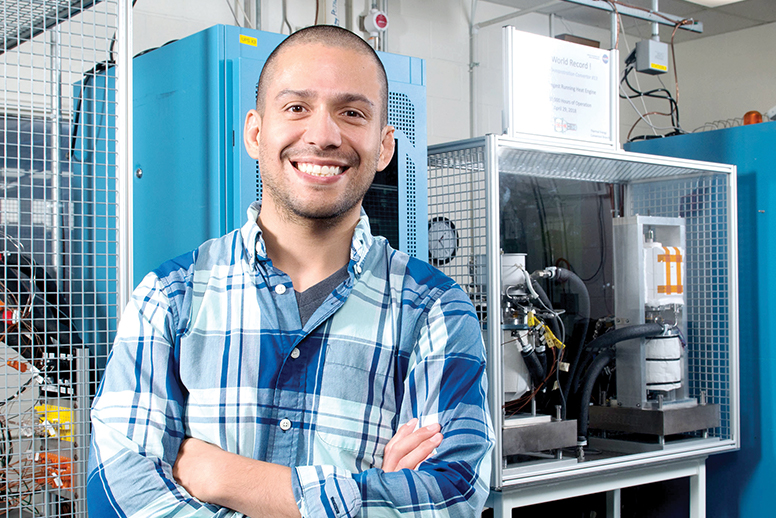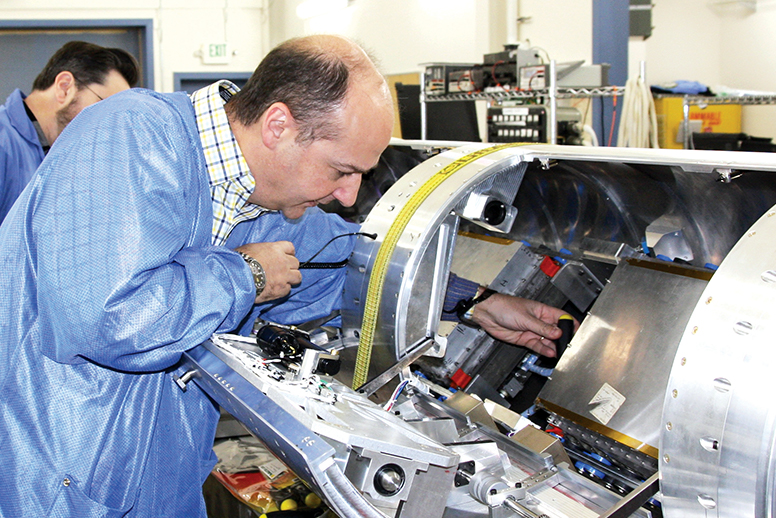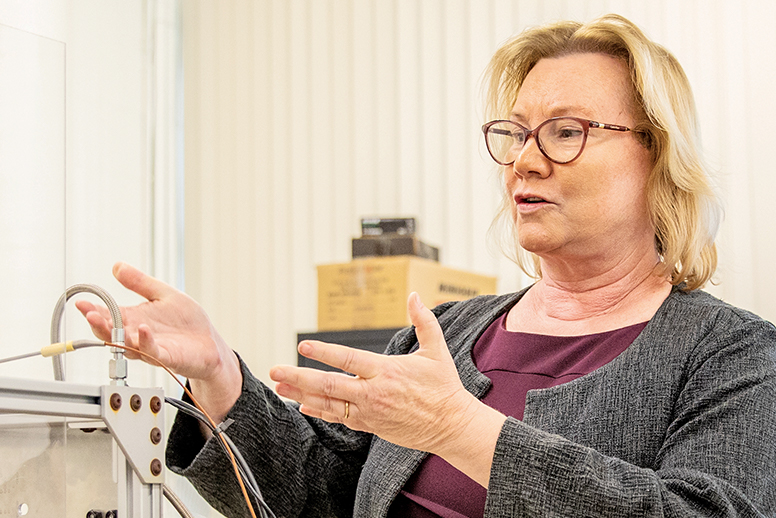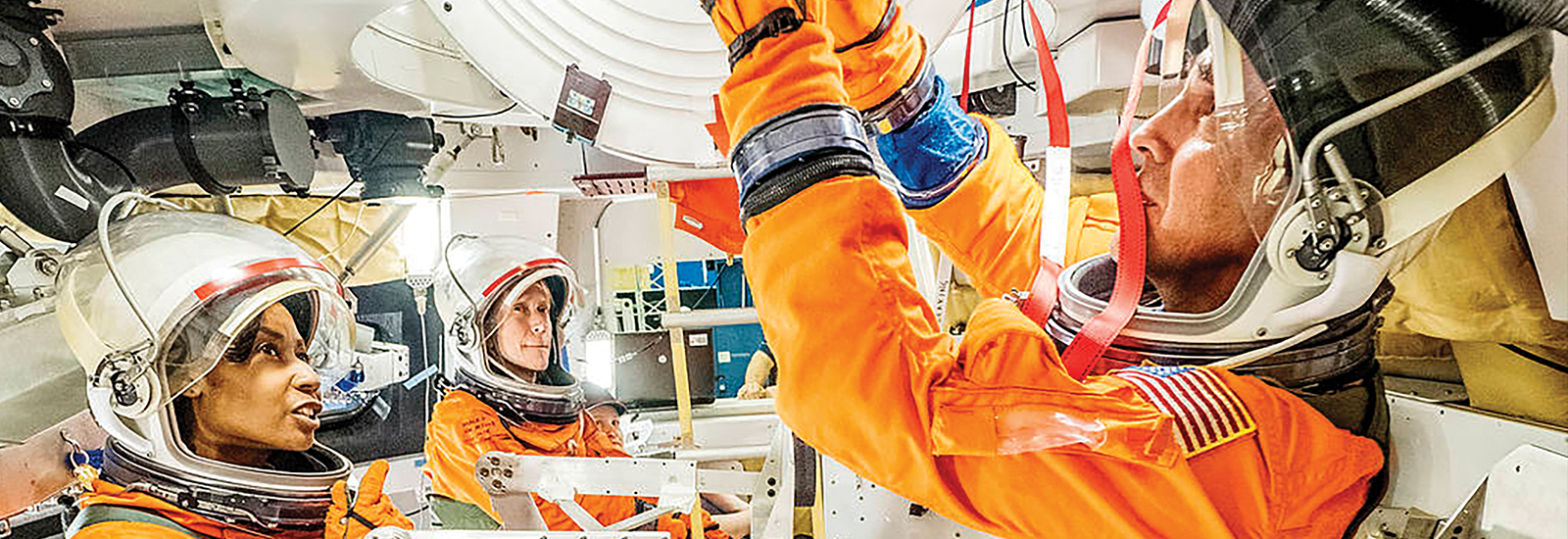by Robert C. Jones Jr.
THIS TIME THEY WILL RIDE THE MYTHOLOGICAL ARROW OF A GREEK GODDESS, SHOOTING THROUGH SPACE TOWARD A CELESTIAL BODY WHERE ONLY 12 OTHERS HAVE EVER SET FOOT. And when they reach their destination, they will stay longer than previous visitors, perhaps planting the first seeds of colonization. Nearly a half-century since humans last walked on the moon, the United States is going back. It’s no longer a dream but a decree—a mandate set forth last March, when Vice President Mike Pence directed NASA to land astronauts on the lunar surface some time in the year 2024. The venerable space agency, which answered President John F. Kennedy’s call to land a man on the moon and return him safely to Earth before the end of the 1960s, has even given its new mission a handle: Artemis, the twin sister of Apollo, whose name was used for the series of expeditions that sent humans to Earth’s only natural satellite from 1969 to 1972. Fittingly, Artemis will include the first female moonwalker. It will take a massive coordinated effort, not just to return to the moon but also to travel farther. A University of Miami researcher fascinated by otherworldly substances, an astrophysicist with a track record of working with NASA, a recent Ph.D. graduate who wants to eventually travel into space, and a mechanical engineer who believes space exploration is part of our DNA are aiding the effort.
A NEW POWER SOURCE
It wasn’t a Buck Rogers comic book story Luis Rodriguez’s third-grade teacher was lecturing about, but the real thing. Astronauts, she told his class, had actually blasted off from Earth aboard a rocket ship, traveled a quarter of a million miles into space, and safely landed and walked on the surface of another world.
Though Rodriguez was only 8 at the time of that history lesson, the magnitude of what astronauts Neil Armstrong, Buzz Aldrin, and Michael Collins accomplished didn’t escape him. “It made me believe we could do anything,” he recalls.
Now, Rodriguez, born nearly two decades after Armstrong’s historic “giant leap for mankind,” is part of the latest generation of NASA engineers who are creating new technologies to safely return humans to the moon—and perhaps hurl them to other worlds.
Since completing his postdoctoral research at the University of Miami College of Engineering last February, Rodriguez has worked as an electrical power systems analyst at NASA’s Glenn Research Center in Cleveland, Ohio, where he and other engineers are conducting experiments on small, lightweight Stirling engines that won’t wear out over the lifetime of a space mission.
How do they work? A radioisotope element provides heat energy, and the Stirling engine converts it to electricity. Free-floating pistons inside the engine move continuously at high frequency. But the pistons never make contact with other engine parts, eliminating wear and tear.
NASA engineers at Glenn recently operated a free-piston Stirling engine at full power for over 110,000 hours of cumulative operation—the equivalent of 12 years—and the engine is still running without issue. Which is an important accomplishment because going deeper into our solar system, a major goal of NASA, will require a power source of almost immeasurable energy.
It’s the challenge of going beyond your bounds that drives me.
So Rodriguez and other engineers are going a step further, working on a Stirling engine for a new type of radioisotope power system called Dynamic RPS. It will use less fuel on journeys that require more efficient and powerful spacecraft and will sustain power for deep-space operations such as conducting science experiments and transmitting data back to Earth.
Born in Colombia, Rodriguez wants to eventually become an astronaut. It’s been a lifelong goal of his ever since that third-grade history lesson on the Apollo 11 mission. “It’s the challenge of going beyond your bounds that drives me,” says Rodriguez, a U.S. Air Force veteran, “of exploring and going on an adventure—like Neil Armstrong stepping on the surface of the moon.”
THE SOLUTION IS IN THE SOIL
But what will happen when astronauts get to the moon? NASA not only wants to go back; the space agency hopes to eventually build a permanent base there, making the concept that British science fiction writer Arthur C. Clarke envisioned in his “Space Odyssey” literary series a reality.
Such a task, however, is easier said than done. The cost of transporting payloads like building materials into space can be pricey, as much as $10,000 per pound.
Ali Ghahremaninezhad, an associate professor and civil materials engineer in the College of Engineering, is working on a solution. “Use the lunar soil that’s already there to build structures,” he says.
Fine as flour and rough as sandpaper, lunar soil is similar to fly ash, a byproduct of coal-fired electric-generating power plants which, when mixed with certain chemicals, forms a compound similar to Portland cement.
“Fly ash has been used as an additive to improve the durability of concrete for quite some time,” Ghahremaninezhad says. “So the idea is to use some of the techniques we’ve developed here on Earth and apply them to the soil on the moon.”
My research is part of the bigger picture.
Tests conducted on lunar rocks, core samples, pebbles, sand, and dust brought back to Earth during the six Apollo missions between 1969 and 1972 have confirmed lunar soil’s similarity to fly ash. But it will take something much more potent than water to activate the soil’s cement-like properties. And that’s where Ghahremaninezhad’s NASA-funded project comes in.
Inside his College of Engineering laboratory, he is testing different materials to determine which would be most effective in turning lunar soil into a hardened, concrete-type substance. Some call it “mooncrete.”
For his testing, Ghahremaninezhad is using a lunar regolith simulant synthesized to approximate the chemical properties of real lunar soil.
“We’ll absolutely still need to transport some materials to the moon. There’s no getting around that,” he says. “But the goal is to minimize cargo.”
Equally as important: The structures built from lunar soil must be sturdy enough to protect astronauts from the harsh conditions on the moon, which include everything from extreme temperature variations and radiation to meteor strikes and even the lunar soil itself, which can cut like glass.
While Ghahremaninezhad’s research is still in its infancy, some of the small, hardened blocks he has produced from the simulant so far have performed well under testing, withstanding different pressure loads and exposure to extreme hot and cold.
We’re going back to the moon and beyond,” he says, referring to plans for the human exploration and colonization of Mars. “And like the Apollo moon missions, we’ll need new technology to accomplish that.”










